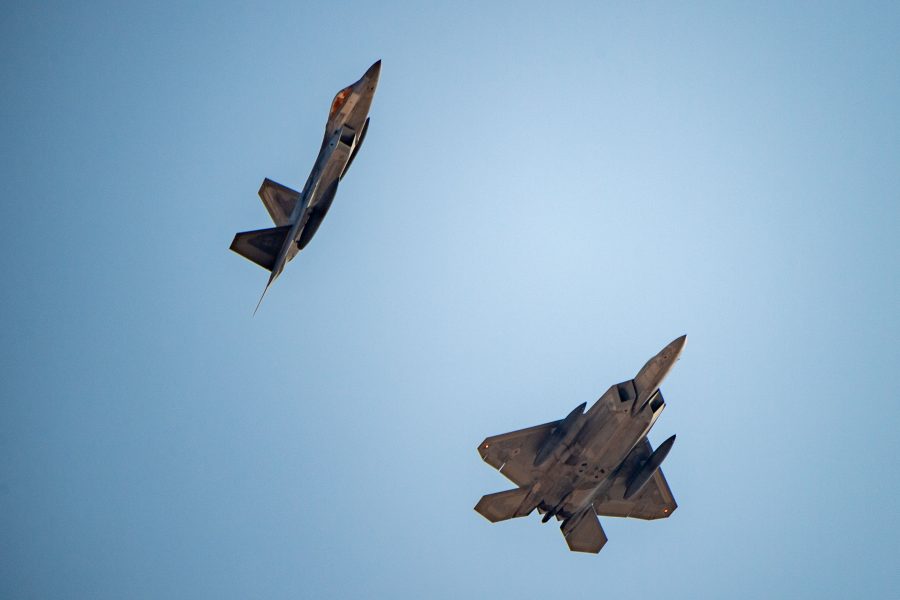The U.S. Air Force rushed a squadron of advanced F-22 Raptor fighters to the Middle East earlier this month, as the White House stepped up its efforts to deter Iran from attacking Israel. The deployment was a demonstration of the service’s ability to rapidly send military might to a global hotspot. But Air Force Chief of Staff Gen. David W. Allvin also sees an illustration of how and why the Air Force is changing its force presentation model.
“The F-22 is a great example of, yes … we can rapidly deploy anywhere in the globe and deliver combat power,” Allvin said in an interview with Air & Space Forces Magazine on Aug. 14.
First ordered to the region Aug. 2 by Secretary of Defense Lloyd J. Austin III, the roughly dozen F-22s from the 90th Fighter Squadron at Joint Base Elmendorf-Richardson, Alaska took off for a nearly 6,000-nautical mile trek across North America and the Atlantic, before stopping over at RAF Lakenheath, U.K. The Raptors crossed the Mediterranean Sea with the help of aerial refueling tankers and landed in the Middle East on Aug. 8.
“In this particular case, it was to an established set of infrastructure that was forward located that was close enough to where we may want to employ them that they could get there relatively quickly,” Allvin said during a conversation at the Pentagon.
The F-22 deployment is an example of what is possible under the current model—but one that may struggle in an island-hopping Pacific fight against China.
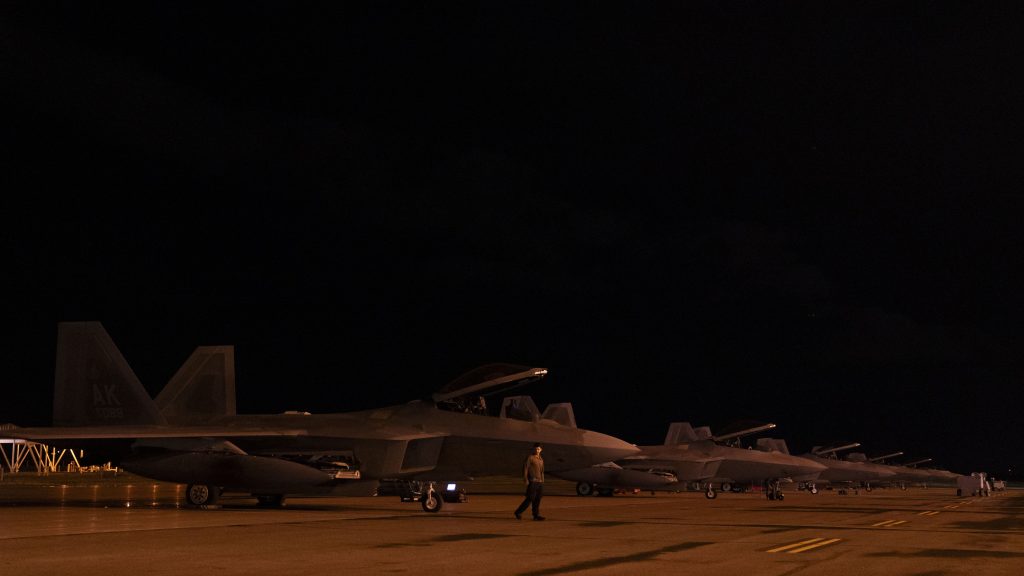
“If you’re going to a place that is not fully established, we have to lift and shift so the entire wing apparatus is going to be able to employ from there. So that is a mindset shift [to] not just hunker down in one location,” Allvin said, using the recent large-scale Bamboo Eagle exercise across the West Coast and Pacific as an example. “You actually have to be able to go between the hub and the spokes.”
The Air Force motto of “Airpower, Anytime, Anywhere” is emblazoned in massive letters on the corridor leading to Allvin’s office. New Expeditionary Air Base units are just one of the ways the service is adapting to project power against China, Russia, and other future threats.
It is further restructuring how it deploys forces with new “units of action” that are designed to function as a cohesive force in dispersed locations. It has rethought how it generates forces for anticipated deployments so Airmen are not rushed forward in a crisis, opting for a model called AFFORGEN in which Airmen have six-month cycles to reset, prepare, train, and deploy.
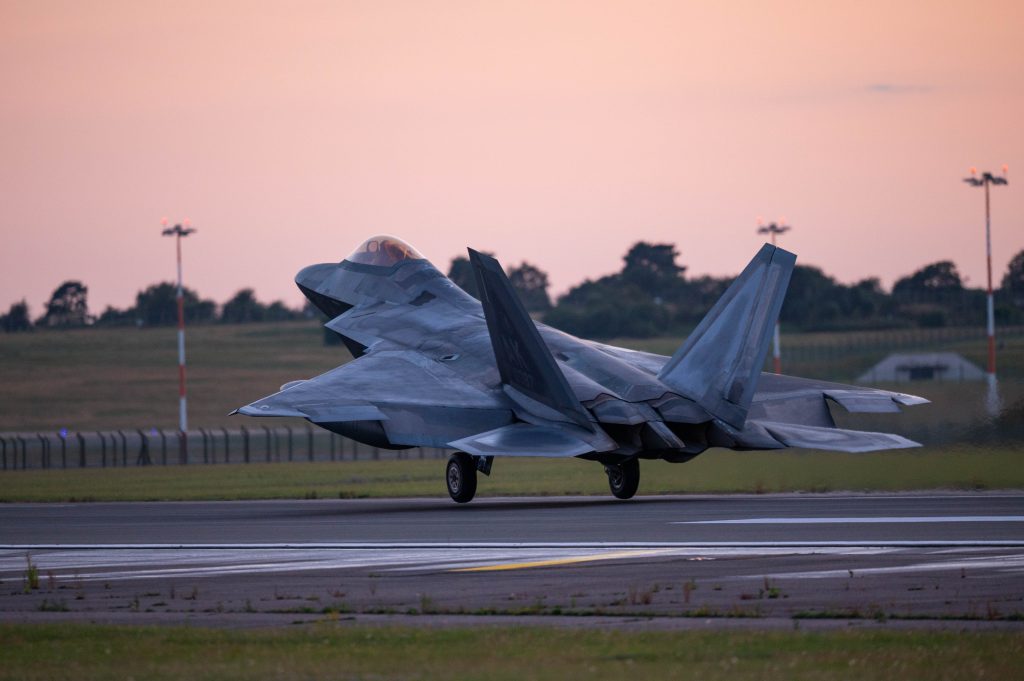
“We organized our Air Force to be as flexible as possible, break it up into as many small little things as we can, and deploy,” Vice Chief of Staff of the Air Force Gen. James C. Slife told Air & Space Forces Magazine last year. “We’re in a different strategic environment now.”
The first Airmen to experience XABs and AFFORGEN deployed at roughly the same time as Hamas’s Oct. 7 attack on Israel, which killed 1,200 people and took 250 hostages. The subsequent upheaval in the Middle East has led to over 180 attacks on U.S. troops in the region, including a drone attack that killed three Soliders in Jordan in January.
Managing the service during the transition from the old way of doing business to Allvin’s vision of the future can be a challenge, particularly since the plan to structure the service into “units of action” is still ongoing. The Air Force still mostly deploys fighter squadrons as it has for years, with roughly half a squadron being sent forward instead of a full squadron of roughly 24 aircraft.
That happened in the Middle East with the F-22s and prior deployments since the Hamas attack led the U.S. to rush airpower in the region. The U.S. sent roughly a dozen additional F-15Es the day before Iran previously attacked Israel in April. Those extra fighters, along with other American Strike Eagles and F-16s, shot down over 80 Iranian drones, part of a massive barrage of 300 missiles and drones launched at Israel that America and its allies helped to virtually completely defeat.
As the Air Force moves forward with its new deployment plans, leaders have tried to keep the rest of the Pentagon informed. As a service, the Air Force provides forces that are ordered to the region by the Secretary of Defense. The Joint Staff Operations Directorate (J3) helps manage competing requirements.
“The thing we have been doing is, as we’re progressing, we’ve been in constant contact with the J3 saying, … ’Does that make sense to you? When the Combatant Command has a request for forces, this is our force offering. This is why it comes in these packages,’” Allvin said. “And yes, I think what we’re going to find is when we haven’t made it over the hump yet, because we’re still trying to put enough definition for us to be able to clearly say, ‘This is how many we have.’”
Once the changes are complete, the service will have a new network of Expeditionary Air Bases, Air Task Forces, and finally, Deployable Combat Wings—all teams of increasingly tight, deployable forces that are not crowdsourced from across the Air Force but train together and are located together as much as possible. The moves are part of the Air Force’s “re-optimization” effort.
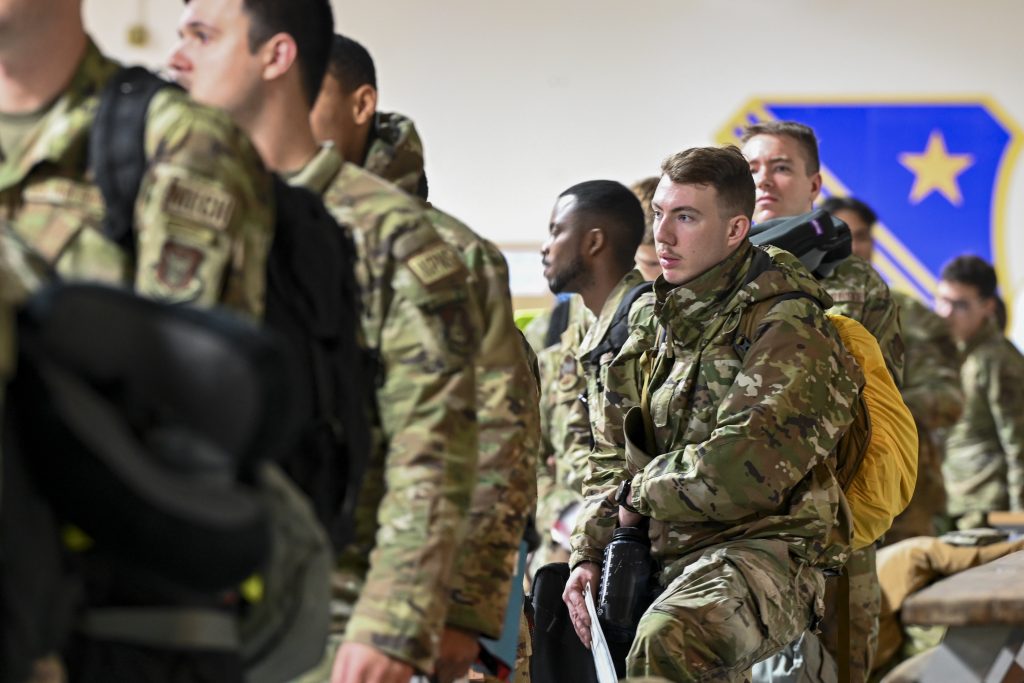
The concept is “many bases aggregating and falling in on one site to actually more unit cohesion leading up to it,” Allvin said. “The XABs were step one, the ATFs are step two, the Deployable Combat Wings are sort of the final instantiation of that. But XABs paid off last October when they went over there, because the first XAB went over Oct. 1. What happened Oct. 7? The units over there in AFCENT [Air Forces Central] said, ‘I was glad … they had already done the pre-deployment site survey, had gone over there, had done those things, and had that familiarity, that understanding.’ It already gave them a leg up. So that was the first inclination that we’re doing things better.”
The F-22 move is part of an overall bid to bolster air and seapower in the region, including through incoming carrier-based F-35 stealth fighters aboard the USS Abraham Lincoln and its accompanying Carrier Strike Group. The Air Force has also upped the number of aerial refueling tankers in the region, with various units contributing KC-135 Stratotankers. Allvin did not comment on how many aircraft were deployed to CENTCOM or say where they were located.
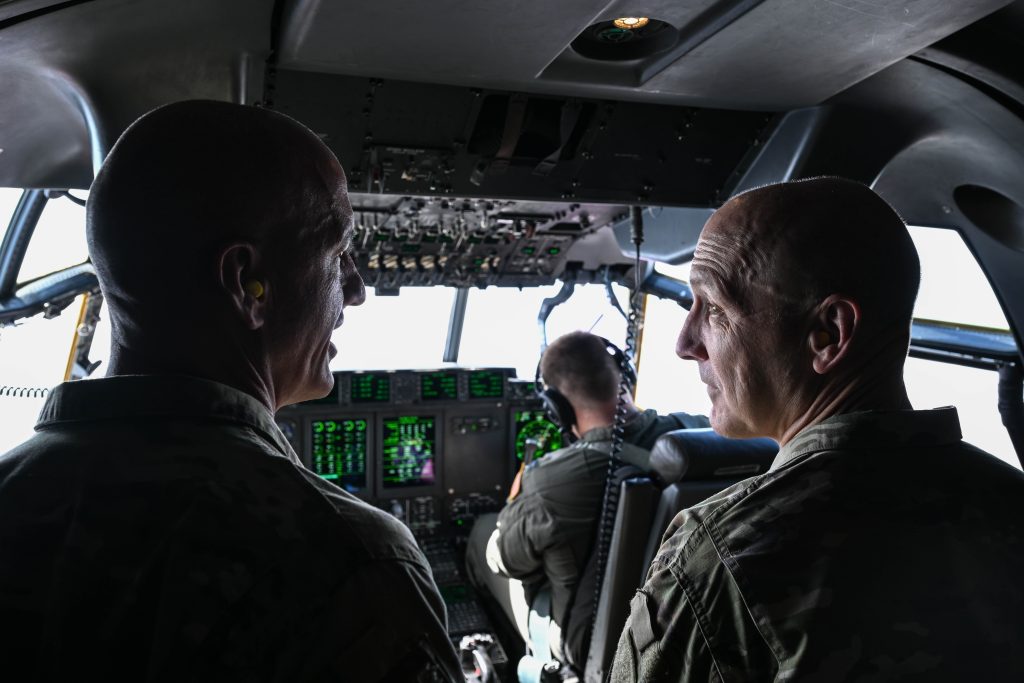
“This is all a path,” Allvin said. “To be clear, if the expectation is that we could potentially get into a major conflict with a peer, I don’t expect that to be a bolt out of the blue. It’s not going to happen overnight. … What happened in the F-22 was clearly an example of our posturing of our forces to be able to ready to respond. But on a large scale, we don’t expect everyone to be able to get up and go in a couple of days.”
The changes enable the Air Force to better weigh capacity and risk as well as increase readiness, service leaders say.
Just as the U.S. Navy has an aircraft carrier heading to CENTCOM and one already in the region, the Air Force wants a more tangible measure of combat power akin to a carrier in the future.
“Once we do that, the credibility will go way up, because it’ll be predictable all the way through,” Allvin said. “And they’ll know, if you use these now, you’re going to lose them here and there’ll be a lot more clarity on the long-term impacts of using up those forces. It’ll never be perfect, because one of the curses is the same blessing of the Air Force’s: our flexibility, right? Flexibility. You can use us anywhere.”
